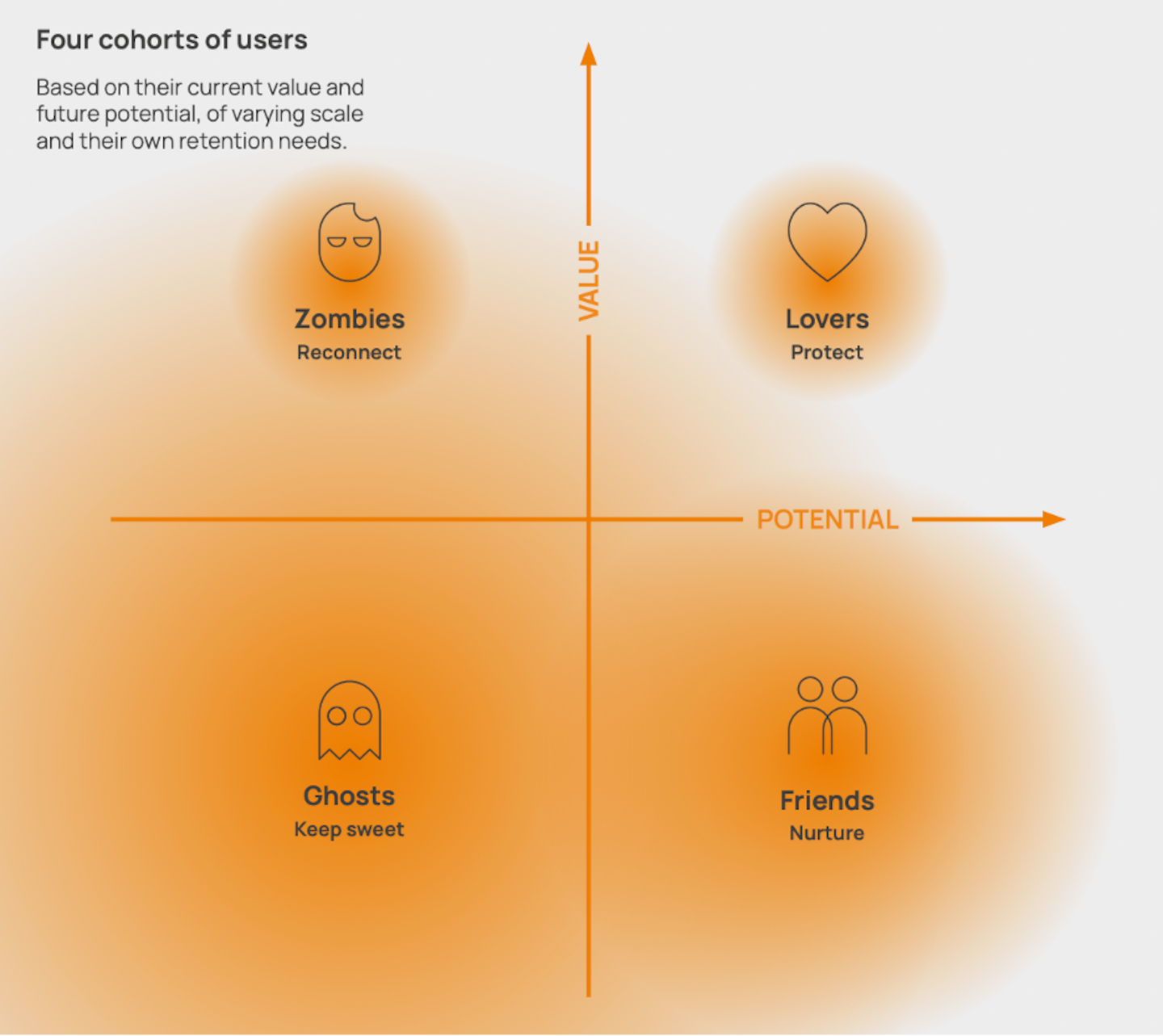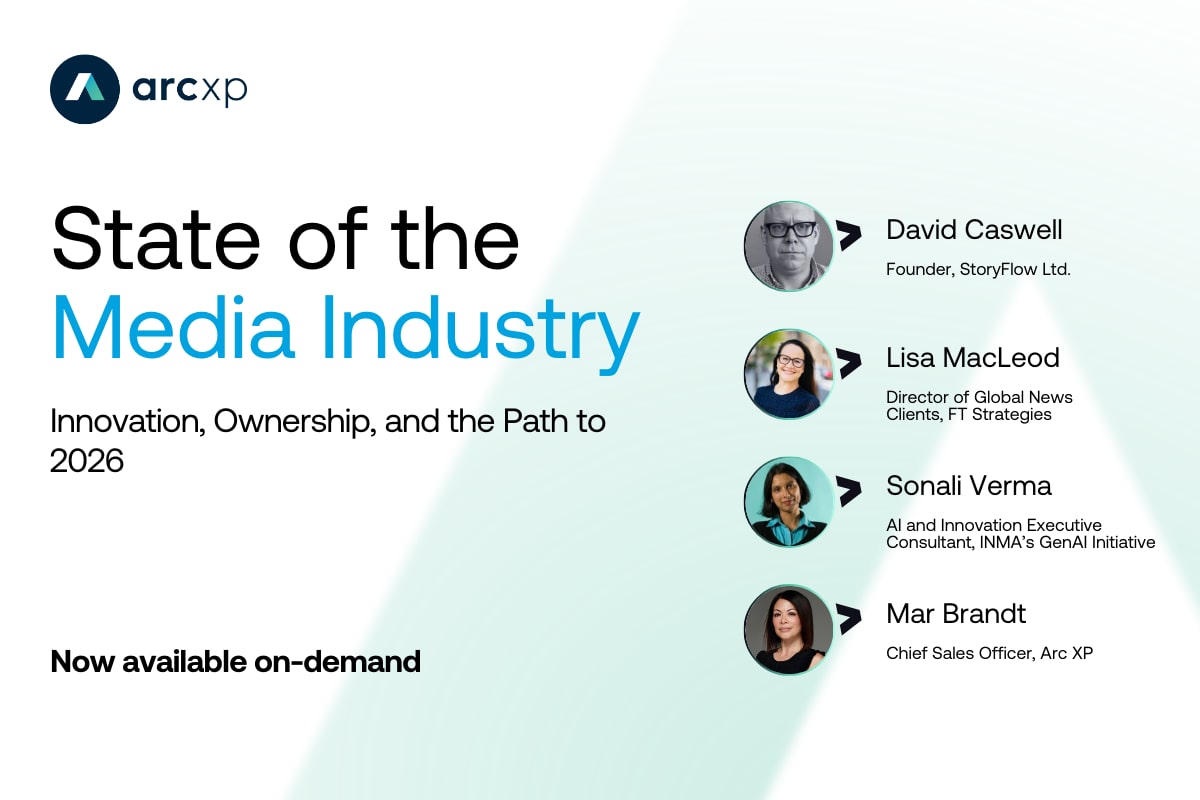Strategies for Effective Relationship Management and Audience Retention

Audience retention stands as a cornerstone of success for news organizations worldwide. At its core, audience retention refers to the ability of a media outlet to keep users engaged and continuously returning for content consumption. Far beyond a mere metric of customer satisfaction, audience retention is a pivotal determinant of a news organization’s sustainability, revenue generation, and overall impact.
Traditional approaches to retention often focus solely on subscriber churn management, overlooking the value of every individual along the customer lifecycle. However, a paradigm shift is underway, as highlighted by Jonny Kaldor, CEO of PugPig, during a recent webinar titled “Retention Economics: Proven Methods for Maximizing Audience Retention,” hosted by Arc XP.
Relationship Management vs Churn Management
The crux of this new approach lies in recognizing the inherent value of retaining audiences at every stage of their journey, from anonymous visitors to loyal subscribers. As Jonny Kaldor emphasizes, “you need to start thinking about segmenting the audience you’re trying to acquire, focusing on the cohorts that are going to bring in the longest value; which means you are acquiring for retention as opposed to acquiring just for that initial hit of revenue.”

This shift marks a departure from traditional short-term KPIs, such as monthly net churn, which prioritize immediate gains over long-term sustainability. Embracing a nuanced understanding of audience dynamics and lifetime value enables organizations to cultivate deeper connections and drive sustainable growth in the digital era.
Understanding the Four Audience Cohorts
At the heart of this strategy is understanding the diverse audience cohorts and tailoring retention efforts to meet their unique needs and behaviors. During the webinar, Jonny sheds light on this segmentation approach, drawing from insights in the “Retention Economics” report authored by Manifesto Growth Architects, PugPig, INdigital, and Piano.

Ghosts:
The largest cohort, referred to as “ghosts,” comprises infrequent visitors who stumble upon content via search engines or social media. While individually contributing low revenue, ghosts represent a substantial volume and potential for future engagement, making them integral to overall audience retention efforts. Revenue from this cohort primarily stems from advertising or affiliate partnerships, leveraging their sheer numbers to generate income.
When it comes to nurturing the ghosts cohort, delicacy is key. These infrequent visitors stumbled upon the content, and it’s crucial not to turn them away with aggressive tactics. “Ghosts are tricky because you don’t have a relationship and can’t reach out to them,” said Jonny. “Instead, the approach should be to keep them sweet and keep them coming back by providing an experience that they want to return to.” To achieve this, avoid overwhelming them with ads or a poor user experience. Focus on providing a smooth, enjoyable experience on owned platforms to encourage further engagement.
Friends:
Moving up the engagement ladder, the “friends” cohort consists of individuals who actively engage with the brand but haven’t necessarily committed to a subscription or premium service. These users visit the homepage, download apps, and interact with content, signaling a high potential for conversion.
Nurturing the “friends” cohort involves strategic communication tailored to deepen their engagement. Rather than bombarding them with offers, efforts should be targeted and aligned with how they initially connected with the brand. Effective onboarding, like The Washington Post’s approach, educates new subscribers about available content and features early on in the onboarding process. Channels like personalized newsletters and apps play a crucial role in fostering friendships, with the goal of transitioning them into loyal subscribers through seamless engagement and communication.
Lovers:
At the pinnacle of audience retention are the “lovers,” representing the most dedicated and engaged segment of the audience. Lovers have already made commitments to the brand through subscriptions, event attendance, or app usage, demonstrating a strong affinity and loyalty.
Nurturing the “lovers” cohort involves safeguarding the existing relationship while continuously enhancing their experience with the brand. It’s essential to recognize that lovers aren’t exclusively subscribers; their commitment is demonstrated through ongoing interactions across various platforms, regardless of subscription status. Leveraging channels like apps, events, and personalized content, such as curated newsletters, enhances their experience and loyalty. Additionally, employing churn management strategies and offering premium products can help keep lovers interested and invested in the brand’s offerings.
Zombies:
Zombies, as their name suggests, are a scary challenge for news organizations. These high-value subscribers show minimal engagement, lurking like ghosts in subscription lists. Though they hold valuable subscriptions, their lack of interaction threatens revenue retention.
Successfully re-engaging zombies requires delicate strategies to pique their interest without overwhelming and scaring them off. Research shows a significant percentage of Millennials and Gen Zs have canceled and resubscribed to the same service, highlighting the potential for re-engagement if handled carefully. Through personalized offerings and genuine care, organizations can gradually guide zombies back into active engagement, potentially transitioning them back into the lover category.
Maintaining and growing audience relationships
Effective audience retention involves more than just subscriber churn management; it requires setting clear expectations and embracing a multifaceted approach to engage audiences at every stage of the life cycle. This section explores five key principles for managing audience cohorts and cultivating meaningful relationships to drive long-term success.
1. Setting Expectations:
Effective audience retention begins with clear expectations set from the start. It’s crucial to bring in and retain customers with high Lifetime Value (LTV) by demonstrating the value of what’s offered. Segmentation based on audience value helps maximize revenue in both short and long terms. This involves offering tailored deals to different user segments. Moreover, regardless of the segment or offer, one constant factor is the pivotal role of engaging content. Media organizations distinguish themselves by engaging users through content, forming a clear value exchange between the customer and the business.
2. The Honeymoon Phase:
The initial phase of a customer relationship, often referred to as the honeymoon phase, is crucial for establishing long-term engagement. While this phase varies in duration, the first two weeks of a subscriber’s journey are especially critical, as they greatly influence the subscriber’s perception of value. According to The Washington Post’s onboarding strategy, media companies have just 14 days to impress and engage new subscribers. Consequently, effective onboarding strategies can significantly shape customer perceptions and habits.
3. Personalization Matters:
Personalization, whether active or passive, is essential for delivering tailored content and experiences to users. Leveraging data on demographics, psychographics, and behaviors allows for targeted delivery of content, increasing engagement and loyalty. Customers also increasingly expect it: recent surveys show that 42% of customers are annoyed by content that is not personalized; and 66% will not purchase from a site when they feel the content does not speak to their personal interests.
4. Offering Irresistible Value:
Providing offerings that are difficult to live without makes it harder for them to leave. By offering multiple products or propositions that connect with users across various channels, organizations can deepen relationships and reduce churn. Additionally, simplicity and clarity in the user experience play a vital role in enhancing engagement and building strong relationships. “The most important strategy for all cohorts is offering great products,” said Jonny. “If you don’t have something that people want to engage with and create habits with, then it’s going to be very difficult to retain.”
5. Delivering Great Experiences:
Understanding user needs, maintaining consistency across touchpoints, ensuring reliability in digital experiences, and simplifying interactions are crucial elements in creating positive user experiences that foster long-term relationships. According to a study conducted by Portent, 40% of users will leave a website if it takes too long to load, and conversion drops 4% for every additional second over 5 seconds. These statistics underscore the importance of prioritizing user-centricity. By prioritizing user needs and providing seamless interactions, businesses can cultivate lasting connections that drive loyalty and growth.
To dive deeper into effective strategies for audience retention, be sure to check out our webinar, “Retention Economics: Proven Methods for Maximizing Audience Retention,” and the accompanying report “Retention Economics” authored by Manifesto Growth Architects, PugPig, INdigital, and Piano.
Recent resources




